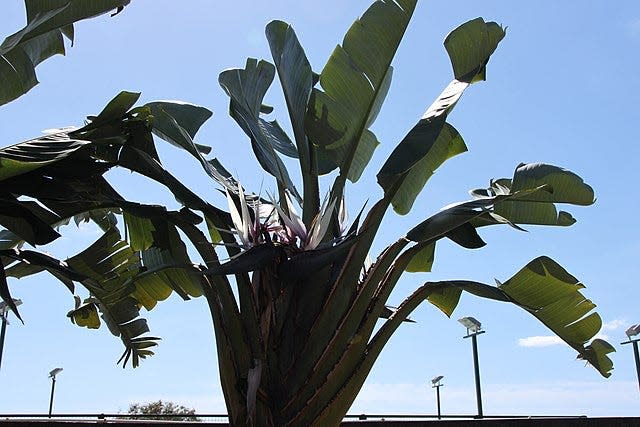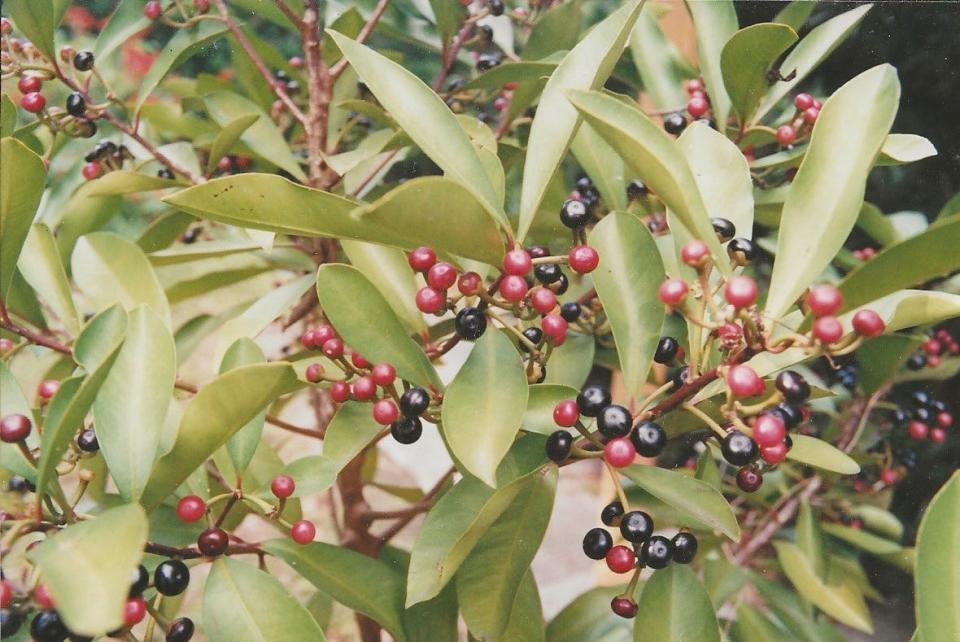Oft mistaken for banana plant, white bird-of-paradise is better. Unless you want fruit

At first glance, casual gardeners almost always mistake the white bird-of-paradise for a banana plant. That’s understandable.
Unlike the more common bird-of-paradise, which grows only about six feet tall, white bird towers up to 30 feet and features large paddle-like leaves strongly reminiscent of banana foliage. It’s a relative of traveler’s tree which, like white bird, is native to Madagascar. The bold leaves tatter charmingly in the wind – again, just like banana leaves.
But that’s where the similarities end because compared to large-growing banana species and varieties, white birds are better – unless you want fruit. Why?
Well, white birds tolerate lower temperatures, and they don’t demand sites heavily amended with organic matter. And unlike bananas, which die after flowering and leave only a few suckers behind, white birds continue to flower and flourish. Finally, white birds are quite drought tolerant once established, often getting by only on rainfall. Propagate with divisions and seeds. Plants and seeds are available online.
A dandy small palm for home and garden
If asked to name a small, feather-leaved palm that’s great for Central Florida landscapes, I imagine almost all gardeners would answer "pygmy date."
But there’s another good answer that – for many folks – would hardly be an afterthought: arikury palm.
This Brazilian species – related to queen palm – is also called parrot palm and miniature coconut. The arikury (Syagrus schizophylla), which slowly grows up to 15 feet tall, isn’t quite as graceful as pygmy date, but it’s a handsome plant nevertheless.
Its medium-green, upward-arching leaves are divided into 80 or so leaflets and held on spiny-edged blackish stems. Arikury’s lengthy, dangling inflorescence of white flowers is followed by two-inch oval fruit that – while edible – have little flavor.
Much more interesting, however, are the palm’s eye-catching leaf bases, which form a spiral pattern encircling its three- to five-inch-wide trunk. Cultivate arikury palm in sun or light shade. As a bonus, plants succeed in screen rooms and bright settings indoors. Plants and seeds, which germinate in one to two months, are available online.
From hanging baskets to small trees Kalanchoes are eye-catching succulents
Tiny banana plant provides plenty of satisfaction
The Super Dwarf Cavendish banana is the only variety that can spend its life contentedly in a five-gallon container, making it possible for anyone with a sunny balcony or patio to cultivate banana plants.
Super Dwarf Cavendish grows only three to four feet tall and sometimes displays colorful inflorescences ranging from pink to bronze. And although fruiting is erratic, the plant’s bitsy bananas are delicious and produced in abundance.
This banana variety excels in sunny, sheltered locations in the landscape on organically enriched and mulched sites that are kept moist. Propagate by division in spring. Plants are available online.
Plant to ponder: Shoe button ardisia
Shoe button ardisia (Ardisia elliptica) is a 10-to-15-foot, cold-hardy Asian shrub with invasive tendencies.

Its small, pinkish flowers are followed by red berries that ripen to black. Commercial nurseries are prohibited from growing and selling this plant.
This article originally appeared on The Ledger: White bird-of-paradise has a lot of advantages over banana plants

